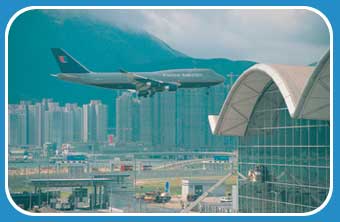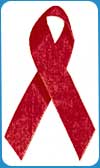| |
Tourism in Trouble
Poorer countries dependent on tourism to earn foreign exchange could face a bleak future following the attacks on the USA on September 11th.
In the tourism industry, hundreds of thousands of people working for airline companies and tour operators have already lost their jobs as people choose not to travel. Worse still, any recovery will be slow as it may take months to restore people's confidence in flying long distances.
More people may choose a holiday destination closer to home for other reasons. Security upgrades in airports and on planes are likely to be passed on to customers in the form of higher flight prices. Others may cancel or postpone their holiday plans because the risk of a global recession makes their future job prospects less certain.
| Airports across the world are experiencing a significant fall in the number of passengers since September 11th. |

©Chris Stowers/Panos Pictures. |
For most people in poorer countries, holidays are a luxury that they cannot afford, therefore tourism in LEDCs frequently relies on holiday-makers from abroad. The impact of a slump in international tourism traffic on these countries could be devastating.
Since September, Mexico has suffered a 40% fall in tourist bookings. Here, tour operators are offering massive discounts on package holidays in an attempt to pull in tourists and save the industry from collapse. In Egypt, half of the people employed in the tourism sector have been forced to take indefinite unpaid leave, and whole resorts have closed down. But the effects could be even more severe in countries that depend on the tourist trade for their main source of income. In over forty LEDCs, tourism is the main source of foreign exchange earnings, such the Caribbean islands. Already, many Caribbean resorts have seen two-thirds of their bookings cancelled for the winter, which is usually their peak season.
| Read more about the problems facing the tourism industry, with a particular focus on Costa Rica, by visiting the Partners in Responsible Tourism site, www2.pirt.org/pirt/ and choose 'Effects of Sept 11' from the menu on the left-hand side. |
|
World AIDS Day
 December 1st each year is World AIDS Day, an international day of coordinated action against AIDS. The red ribbon is a symbol of AIDS awareness that is worn all year round to show respect for those who have died of AIDS, to show care and concern for those who are living with HIV and AIDS, and to remind us to keep up the fight against the virus. December 1st each year is World AIDS Day, an international day of coordinated action against AIDS. The red ribbon is a symbol of AIDS awareness that is worn all year round to show respect for those who have died of AIDS, to show care and concern for those who are living with HIV and AIDS, and to remind us to keep up the fight against the virus.
Over 36 million people are living with the HIV virus worldwide, including and there are nearly 15,000 new infections every day. In 2001, there were 33,000 people living with HIV in the UK, the highest number since 1982. But 95% of all AIDS cases today are in the world's poorest countries. Unlike the developed world, many people with HIV in LEDCs cannot afford the drug treatments that could help them to lead full, active lives, and slow down the development of AIDS.
There are still many people who are uncomfortable or even hostile to people with HIV. Many people with HIV have been victims of prejudice at work and at home. To challenge this prejudice, the UK's National AIDS Trust is running a campaign to educate people. The campaign encourages people to understand that you can't be infected with HIV by working or socialising with a person who is HIV positive.
World AIDS Day aims to show that YOU can make a difference in the fight against AIDS. You could organise an event at school to raise money for people who cannot afford the drug treatments or you could make a donation to an organisation that helps people with HIV/AIDS.
To find out about the work of Hope HIV, a charity that helps the orphans of AIDS and how you can help, visit www.hopehiv.org
For more substantial background information, news items and statistics on HIV/AIDS, visit the United Nations Programme on HIV/AIDS website, www.unaids.org |
|
Cuba was ready for Hurricane Michelle
People who live on Caribbean islands like Cuba are used to hurricanes. During the hurricane season between August and November, these vicious tropical storms build up over the Atlantic Ocean. Hurricanes bring heavy rains and winds of more than 200 km per hour that can cause flooding, destruction of houses and farmland, and deaths and injuries to people.
With 215 km per hour winds, Hurricane Michelle hit the island on November 4th 2001, the worst storm to hit Cuba for over fifty years. But the people of Cuba did their best to prepare for Hurricane Michelle. During the two days before the hurricane, nearly 700,000 people and 600,000 animals were evacuated and taken to shelters in safer places. This was not easy. Many of Cuba's roads are poor, and there is a shortage of trucks, lorries and buses to move that number of people and animals. In other areas, people were advised to store candles and boiled water in order to prepare for the days after the hurricane. Once the storm had passed, electricity and water supplies would need to be cut off to repair pylons and pipes.
As the Hurricane Michelle ripped across the island, 22,400 homes were damaged, and another 2,800 were destroyed. Nevertheless, only five people died and eight were injured during the hurricane. Without the preparations beforehand, things could have been much worse.
|
Visit www.usatoday.com/weather/huricane/whur0.htm for background information, latest news and satellite images of hurricanes.
For more basic information on hurricanes, visit www.fema.gov/kids/hurr.htm
|
|
|
|





